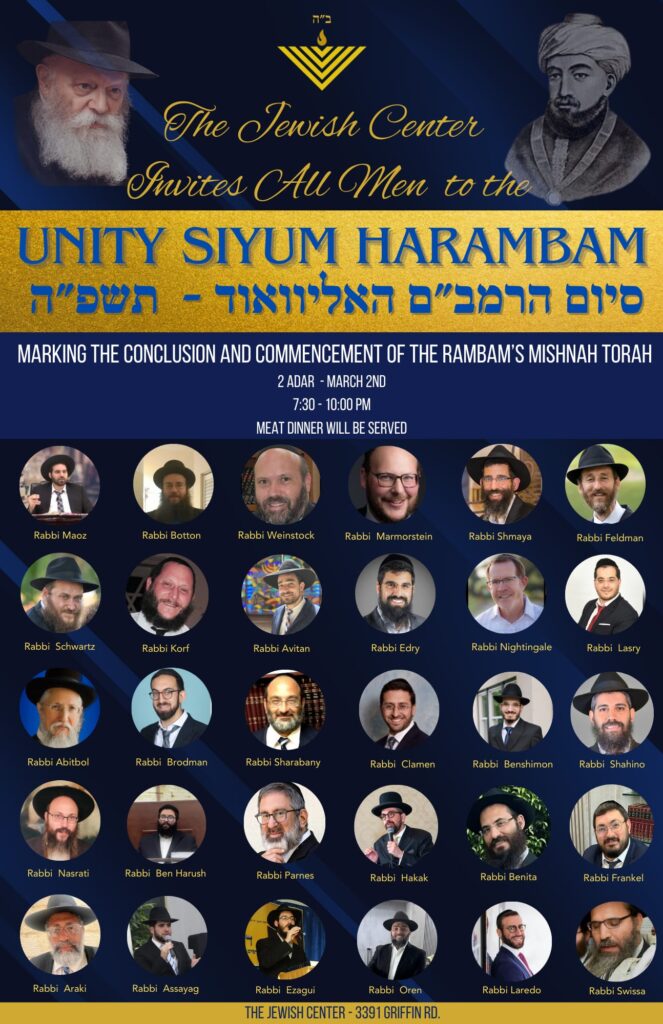Moshe ben Maimon, known as the Rambam (Maimonides), was one of the greatest Jewish scholars, physicians, and philosophers. Born in 1138 in Córdoba, Spain, he fled due to persecution and eventually settled in Egypt, where he became a leader of the Jewish community and physician to Sultan Saladin. His works spanned Jewish law, philosophy, and medicine, but his most influential contribution was the Mishneh Torah, a monumental codification of Jewish law.
The Mishneh Torah was written between 1170 and 1180 and remains one of the most authoritative Jewish legal works. Unlike previous halachic works that relied on extensive Talmudic discussions, the Rambam sought to streamline and clarify Jewish law, making it accessible to all, regardless of scholarly background. This work covered every aspect of Jewish life, from daily rituals to civil and criminal law, as well as laws concerning the avodah (service) in the Beit HaMikdash. the Rambam’s goal was to provide a comprehensive and independent guide that would allow Jews to fully understand and observe the Torah’s commandments without requiring extensive study of the Talmud.
The Mishneh Torah eventually became a fundamental text in Jewish scholarship, studied and referenced by later scholars, including Rabbi Yosef Karo, the author of the Shulchan Aruch. The Mishneh Torah remains a central halachic source, bridging the gap between the complexities of Talmudic discourse and practical observance.
In 1984, the Lubavitcher Rebbe, Rabbi Menachem Mendel Schneerson, initiated a global study cycle of the Mishneh Torah, encouraging Jews to study it systematically. He recognized the value of the Rambam’s work in uniting the Jewish people, providing a shared framework of halachic knowledge across diverse communities. By instituting a structured study program, the Rebbe sought to ensure that every Jew, regardless of background, could engage with the Rambam’s teachings.
The study system includes three tracks: studying three chapters per day to complete the Mishneh Torah annually, one chapter per day to complete it in about three years, or studying Sefer HaMitzvot, which covers the 613 commandments in one year. These cycles have grown in popularity, with thousands worldwide participating daily. Each cycle culminates in a Siyum HaRambam, a celebratory completion event held in communities worldwide. These events emphasize the unifying nature of studying Mishneh Torah and inspire continued commitment to learning.
The Lubavitcher Rebbe emphasized that the Rambam’s teachings serve as a guide not just in legal matters but also in personal spiritual development. His work, infused with deep logic and clarity, presents the entirety of Jewish law in a systematic manner, making it a valuable tool for scholars and laypeople alike. By engaging with Mishneh Torah daily, individuals gain a comprehensive perspective on Torah law and philosophy, fulfilling the mitzvah of Torah study in an organized and meaningful way.
Today, the Mishneh Torah remains a cornerstone of Jewish learning, and the Lubavitcher Rebbe’s study initiative has ensured its continued relevance. The study cycles unite Jews across generations and geography, reinforcing the Rambam’s vision of a comprehensive, accessible Torah for all. As thousands worldwide continue to engage in the study of Mishneh Torah, its impact on Jewish life and scholarship endures, ensuring that the Rambam’s influence on Jewish thought and practice continues to inspire future generations.







